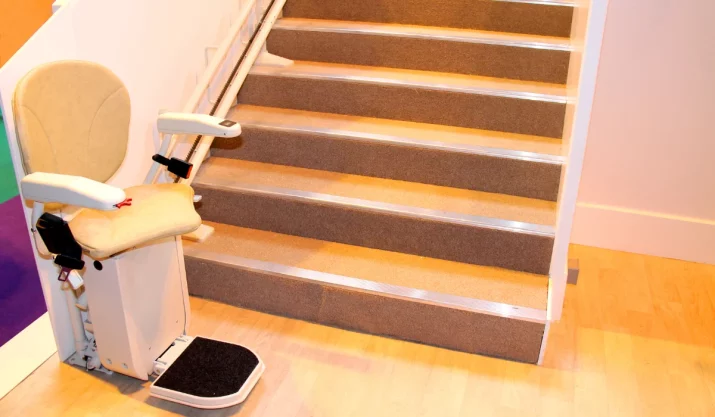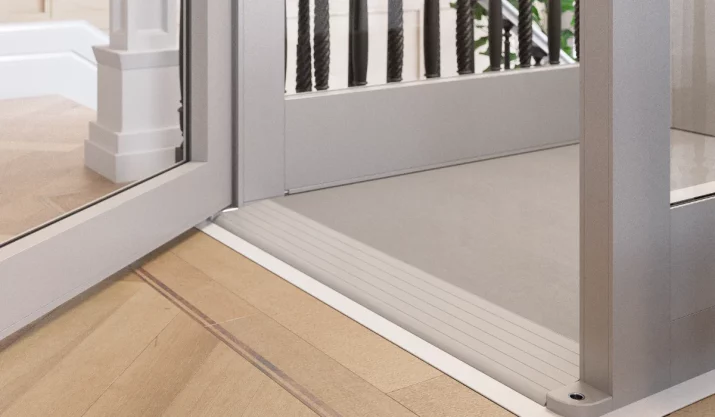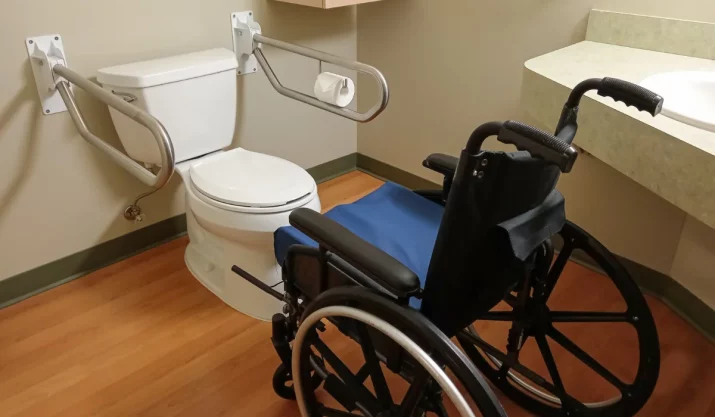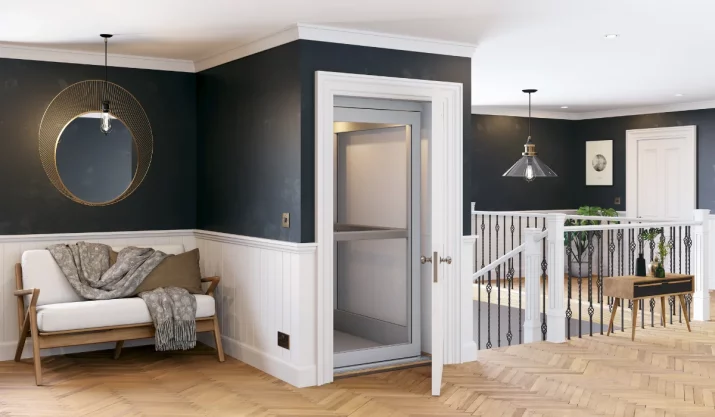Common Stair Lift Myths California Homeowners Should Stop Believing

Table of Contents
- Key Takeaways
- Myth 1: Stair lifts are only for seniors
- Myth 2: Installing a stair lift damages your stairs
- Myth 3: Stair lifts can’t fit curved or narrow stairs
- Myth 4: Stair lifts stop working during power outages
- Myth 5: Stair lifts look bulky and ruin your décor
- Myth 6: Stair lifts can’t carry heavier users
- Myth 7: Wheelchair lifts and stair lifts are the same thing
- Myth 8: Stair lifts are too expensive
- Making the Right Stair Lift Choice for Your California Home
- FAQs
Many California homeowners desire safe and comfortable homes as they age. But common stair lift myths can stop them from getting helpful equipment. Some think stair lifts are only for seniors or that they harm stairs, but both ideas are false.
Modern stair lifts are quiet, slim, and designed for use in real homes. Whether you live in Fresno or San Diego, a stair lift or wheelchair lift can make daily life easier. These lifts enhance home accessibility for individuals of all ages, particularly those with mobility limitations.
This guide covers common stair lift myths and the facts about installation, safety, appearance, and cost. By the end, you’ll know how professionals install a lift and how it can make your home safer and easier to use.
Key Takeaways
- Stair lifts help more than seniors. Younger adults with injuries or mobility limitations also use them.
- Installation does not harm your home. Rails mount to stair treads, not walls, and can be removed later.
- Curved and straight stairlift models are suitable for a wide range of spaces. The correct setup also fits narrow stairs.
- Most stair lifts and wheelchair lifts run on batteries, so they continue to function during outages and keep you moving.
Myth 1: Stair lifts are only for seniors
Many people think stair lifts are just for seniors, but that’s one of the biggest stair lift myths California homeowners believe. In truth, people of all ages use them to maintain their independence. A stair lift helps anyone with physical limitations or mobility issues. Stair lifts have features that help people with arthritis, those recovering from an injury, or those who need support after surgery.
Families across California often install a stair lift or wheelchair lift to help loved ones move freely between floors. It’s not about age. It’s about making your home safe and accessible for everyone who lives there.
Myth 2: Installing a stair lift damages your stairs
Another common misconception is whether a stair lift installation will damage your home’s walls, floors, or stairs. That’s not true. Professional installers attach the stair lift rails to the stair treads with small brackets, rather than to the wall, so your drywall, trim, and handrails remain untouched. Installers can also install a stair lift on carpeted stairs.
You can also remove a stair lift when you move to a new home without leaving massive damage behind, since the small screw holes will be easy to fill. With years of experience, California Mobility technicians handle each installation with care and precision.
Myth 3: Stair lifts can’t fit curved or narrow stairs
Homeowners often assume their stairs are too tight or too curvy for a lift. Thankfully, manufacturers have addressed this concern by designing various stair lifts, including straight, curved, and custom models that match different stair layouts. With these designs in place, all you need to do is check the stair lift space requirements.
For winding stairs, a curved stairlift can be custom-built to fit each turn. For simple layouts, a straight stairlift installs faster and costs less.
If your stairs end near a hallway or doorway, a hinged rail folds up to keep the area clear. From compact bungalows to two-story homes, there’s a stair lift that fits.
Myth 4: Stair lifts stop working during power outages
In California, power outages can happen during storms, wildfires, or planned maintenance. Some worry they’ll get stuck on the stairs if the power goes out.
One of the benefits of battery-powered stair lifts is that they continue to function even during outages, allowing you to navigate your home safely.
A full charge allows for multiple trips without house power, and when power returns, the system recharges automatically. With remote controls, you can park the lift at the top or bottom. This innovative design keeps your home accessible when you need it.
Myth 5: Stair lifts look bulky and ruin your décor
Old stair lift models used to look clunky. However, manufacturers design stair lift models to be sleek and modern. You can even choose finishes that match your home’s color and style. When not in use, the footrest, swivel seat, and hinged rail fold up neatly to free up space.
Whether you visit a showroom in Los Angeles or talk to a local installer in Sacramento, you’ll see that a high-quality stair lift blends in beautifully. Most visitors won’t even notice it until you point it out. It’s a tool that adds safety and convenience, not clutter.
Myth 6: Stair lifts can’t carry heavier users
Manufacturers build modern lifts for strength and comfort. Stair lift weight limits vary by model, but several heavy-duty options safely carry larger users without slowing down. These designs feature reinforced rails, powerful motors, and broader, padded seats for added support.
Whether you choose a curved or straight stairlift, you can find one that fits your space and needs. Each model is thoroughly tested for safety and crafted from durable materials to withstand years of use.
Myth 7: Wheelchair lifts and stair lifts are the same thing
While both help with home accessibility, they serve slightly different purposes. A wheelchair lift carries the user while they stay seated in their wheelchair, while a stair lift carries a person in a chair that glides along the stairs.
If someone in your home uses a wheelchair full-time, a wheelchair lift might be the best choice for outdoor steps or raised entryways. You will also need to follow California’s regulations for wheelchair lifts.
However, if you’re simply looking for help navigating indoor stairs, a stair lift offers a more compact and straightforward option.
At California Mobility, we can help you determine which one best suits your space and lifestyle.
Myth 8: Stair lifts are too expensive
Some homeowners assume that a stair lift installed by professionals will cost too much. In reality, the cost of a stairlift is often lower than people expect, especially when compared to remodeling or assisted living expenses. A stair lift or wheelchair lift is one of the most cost-effective ways to improve home accessibility.
The U.S. Department of Veterans Affairs doesn’t directly provide stair lifts, but it offers grants for adaptive equipment, including lifts, through programs like the Specially Adapted Housing (SAH) Grant. Eligible veterans can also qualify for home modification funding or a one-time Automobile Allowance to improve mobility at home.
With years of experience, we help customers explore financing and grant options to make stair lifts affordable for every household.
Making the Right Stair Lift Choice for Your California Home
Most stair lift myths come from outdated information. The truth is, modern lifts are reliable, comfortable, and easy to maintain.
Whether you need a curved stairlift, straight stairlift, or wheelchair lift, you can find the right fit for your home and family.
At California Mobility, we offer quality products, expert installation, and ongoing support. With a local showroom, friendly professionals, and years of experience, they make home upgrades simple.
Ready to make your stairs safer? Contact us today or request a free quote. Our team will explain your options and help you choose the right lift.






